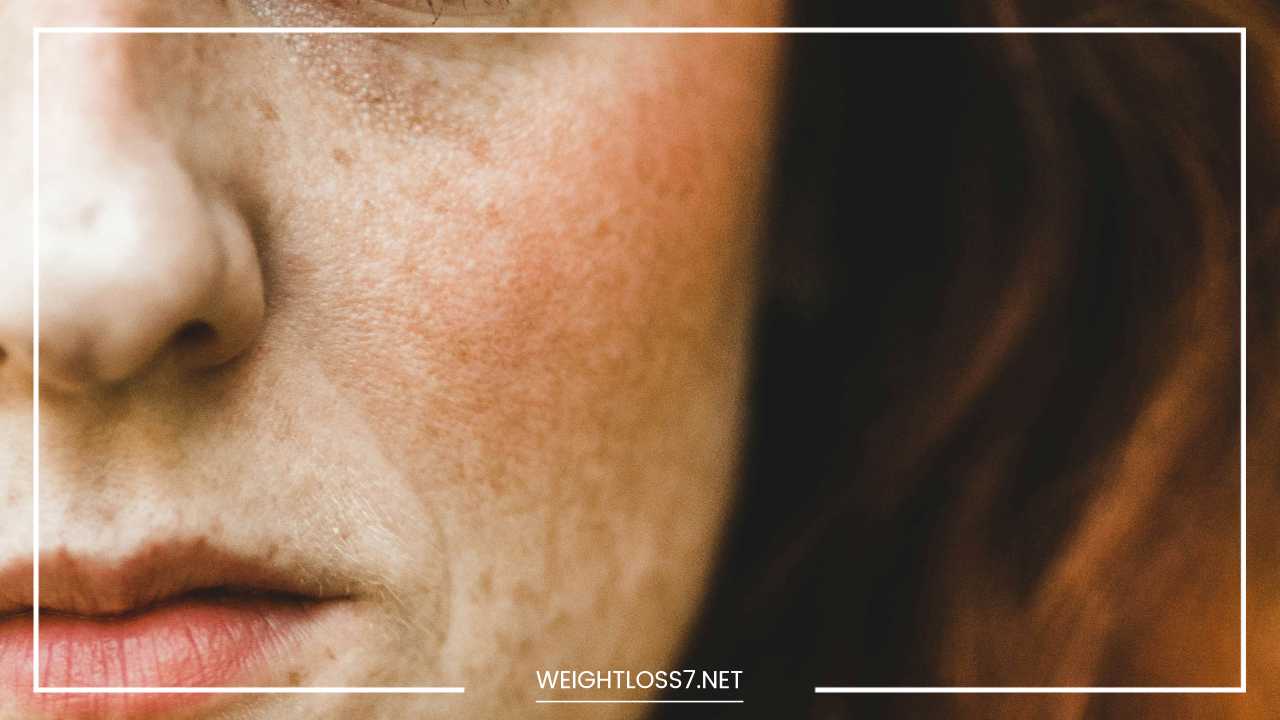5 Acne Treatment Tips You Can Use Today

Acne Treatment
Conquering Acne: A Comprehensive Guide to Clearer Skin
Acne. The mere mention of the word can conjure up unwelcome memories of breakouts, frustration, and self-consciousness. It’s a common skin concern affecting millions of people globally, regardless of age, gender, or skin type.
While it might seem like an endless battle, achieving clearer, brighter skin is absolutely possible. This comprehensive guide equips you with powerful knowledge and practical strategies to combat acne and reclaim your confidence.
Understanding Acne: The Root of the Problem
Before diving into treatment strategies, let’s delve into the science behind acne. Acne vulgaris, the most common form, occurs when several factors converge:
- Excess oil production: Sebum, a natural oil produced by sebaceous glands, keeps your skin lubricated. However, hormonal fluctuations or other triggers can lead to an overproduction of sebum.
- Clogged pores: Dead skin cells and sebum can combine and clog pores, creating a breeding ground for bacteria.
- Inflammation: The trapped bacteria trigger an inflammatory response within the pore, leading to the development of pimples, whiteheads, blackheads, or cysts.
The Power of a Personalized Routine: Tailoring Your Approach
There’s no one-size-fits-all solution for acne. The ideal approach depends on the severity and type of acne you experience. Here’s a breakdown of key strategies:
1. Cleansing: The Foundation for Clear Skin
Washing your face regularly removes excess oil, dirt, and dead skin cells, preventing them from clogging pores. However, balance is key:
-
Frequency: Cleanse twice daily, in the morning and before bed. If you sweat heavily during exercise, consider a gentle midday cleanse as well.
-
Temperature matters: Opt for lukewarm water. Hot water strips your skin of natural oils, potentially worsening breakouts.
-
Choosing the right cleanser: Look for a gentle cleanser formulated for acne-prone skin. Here’s a breakdown of popular ingredients and their benefits:
- Benzoyl peroxide: A powerful ingredient that kills acne-causing bacteria and reduces inflammation. Ideal for mild to moderate acne with whiteheads and blackheads.
- Salicylic acid (BHA): A gentle exfoliating agent that unclogs pores and reduces redness. Effective for blackheads and mild inflammatory acne.
- Alpha hydroxy acids (AHAs) like glycolic acid: These help loosen dead skin cells and promote cell turnover, keeping pores clear. Suitable for milder acne with clogged pores.
-
Gentle application is key: Massage the cleanser onto your damp face in circular motions for about 30 seconds. Avoid harsh scrubbing or using washcloths that can irritate the skin. Rinse thoroughly with lukewarm water and pat your face dry with a clean, soft towel.
2. Moisturizing: Hydration is Your Ally
Don’t be fooled by the oil on your face! Even acne-prone skin needs proper hydration. Here’s why:
- Understanding oil production: Contrary to popular belief, a good moisturizer won’t clog pores. In fact, it can help regulate oil production. When your skin is dry and dehydrated, it goes into overdrive to produce more oil to compensate, potentially worsening acne.
- Choosing the right moisturizer: Look for oil-free, non-comedogenic moisturizers. These are lightweight and formulated not to clog pores.
- Hyaluronic acid to the rescue: This humectant ingredient draws moisture into the skin without feeling greasy, keeping it plump and hydrated.
- Moisturizing routine: Apply a thin layer of moisturizer to your damp face after cleansing. This helps trap water in the skin and keeps it healthy.
3. Spot Treatment: Targeting Troublemakers
For those persistent pimples, spot treatment can be a lifesaver. Here are some effective ingredients to consider:
- Benzoyl peroxide: Ideal for targeted application due to its strong antibacterial and anti-inflammatory properties.
- Salicylic acid: A good option for blackheads and papules (small, red bumps).
- Sulfur: This natural ingredient helps kill bacteria and reduce inflammation. However, it can have a drying effect and a slight odor.
- Tea tree oil: A natural option with antibacterial and anti-inflammatory properties. However, be cautious as it can irritate sensitive skin. Do a patch test on a small area of your face before using it more widely.
4. Lifestyle Habits: Beyond Skincare Products
What you put in your body can significantly impact your skin. Here are lifestyle changes that can contribute to clearer skin:
- Diet: Limit sugary and processed foods with a high glycemic index. These can cause blood sugar spikes that may contribute to acne breakouts. Focus on a balanced diet rich in fruits, vegetables, and whole grains. Consider consulting a dermatologist or nutritionist to develop a personalized plan that addresses potential dietary triggers. Some studies suggest a link between dairy consumption and acne. Experimenting with eliminating dairy for a short period under professional guidance can help determine if it plays a role in your acne.
- Hydration: Drink plenty of water throughout the day to keep your skin hydrated from the inside out. Aim for eight glasses of water daily.
- Stress management: Chronic stress can exacerbate acne. Find healthy ways to manage stress, such as exercise, yoga, meditation, or spending time in nature.
- Sleep: Getting enough sleep (7-8 hours per night) is crucial for overall health, including skin health. When you’re sleep-deprived, your body produces more cortisol, a stress hormone that can increase breakouts.
- Exercise: Regular physical activity helps reduce stress levels and improve overall circulation, which can benefit your skin. Aim for at least 30 minutes of moderate-intensity exercise most days of the week.
5. Resist the Urge to Pick!
It’s tempting, but picking at your pimples can worsen inflammation, lead to scarring, and even spread bacteria to other areas of your face. Here’s why it’s important to resist the urge:
- Increased inflammation: Picking at pimples can irritate the surrounding skin and make breakouts worse.
- Scarring risk: Picking can damage the deeper layers of skin, leading to permanent scarring.
- Spreading bacteria: Your fingers harbor bacteria that can be transferred to other areas of your face when you pick, causing further breakouts.
Bonus Tip: Patience is a Virtue
Remember, acne treatment is a marathon, not a sprint. Here’s why consistency and patience are key:
- Cellular turnover: Skin cells turn over every 28 days or so. It takes time for new, healthy cells to replace clogged pores and existing blemishes to heal.
- Underlying issues: Resolving acne might involve addressing hormonal imbalances or underlying conditions. These issues take time to stabilize.
- Finding the right fit: Different treatment approaches work for different people. It might take some trial and error to find the perfect routine for your skin.
When to Seek Professional Help
While many acne cases can be managed with over-the-counter products and lifestyle changes, some situations require professional intervention. Here’s when to consider consulting a dermatologist:
- Severe or cystic acne: If you have severe or cystic acne that is painful, inflamed, or leaves significant scarring, a dermatologist can develop a more aggressive treatment plan, which might include prescription medications, oral antibiotics, or other therapies.
- Lack of improvement: If your acne persists despite consistent use of over-the-counter treatments for 6-8 weeks, a dermatologist can diagnose the underlying cause and recommend a more targeted approach.
- Scarring concerns: If you’re concerned about existing acne scars, a dermatologist can offer scar-reduction treatments like laser therapy or chemical peels.
Dermatologist-Prescribed Treatments: Expanding Your Options
Dermatologists have access to a wider range of treatments for acne, including:
- Prescription topical medications: These can include stronger formulations of benzoyl peroxide, salicylic acid, retinoids (vitamin A derivatives), or antibiotics.
- Oral antibiotics: For moderate to severe acne, oral antibiotics can help reduce inflammation and kill bacteria.
- Hormonal therapy: For women with hormonal acne, birth control pills or other hormonal medications can be helpful.
- Isotretinoin (Accutane): This powerful medication is reserved for severe cystic acne that hasn’t responded to other treatments. It requires close monitoring by a dermatologist due to potential side effects.
Light Therapy and Alternative Therapies: Exploring Additional Avenues
While not everyone experiences significant results, some people with mild to moderate acne find the following therapies beneficial:
- Light therapy: Blue light therapy targets acne-causing bacteria and may offer some benefits.
- Chemical peels: These treatments exfoliate the skin and can unclog pores.
- Tea tree oil: While not a substitute for a complete routine, topical tea tree oil may offer mild benefits for some.
Remember: Always consult a dermatologist before using any new treatments, especially if you have sensitive skin or any underlying medical conditions.
Additional Tips for Managing Acne
Here are some additional practices that can complement your acne treatment routine:
- Wash your hair regularly: Hair oil and product buildup can transfer to your face and clog pores. Wash your hair regularly, especially if it tends to be oily.
- Change your pillowcase frequently: Dirt, oil, and dead skin cells can accumulate on your pillowcase and transfer to your face at night. Aim to change your pillowcase every other day, or at least twice a week.
- Don’t touch your face: Throughout the day, your hands come into contact with countless surfaces harboring bacteria. Avoid touching your face to prevent transferring bacteria to your pores.
- Sunscreen is essential: Even acne-prone skin needs sun protection. Look for a non-comedogenic sunscreen with SPF 30 or higher and apply it daily, even on cloudy days. Sun exposure can worsen acne and increase the risk of scarring.
- Be gentle with your skin: Avoid harsh scrubs, abrasive products, and anything that irritates your skin. This can worsen inflammation and breakouts.
- Exfoliate regularly, but don’t overdo it: Exfoliation helps remove dead skin cells that can clog pores. Aim for 1-2 times a week with a gentle exfoliating product. Harsh scrubs can damage the skin.
- Makeup choices matter: Choose non-comedogenic makeup that won’t clog pores. Look for oil-free and water-based products labeled as “non-comedogenic” or “acne-prone.”
- Clean your makeup brushes regularly: Dirty makeup brushes can harbor bacteria and contribute to breakouts. Wash your brushes at least once a week with a gentle cleanser and air dry them completely.
Maintaining Clear Skin: Long-Term Strategies
Once you achieve clearer skin, here are some tips to maintain your progress:
- Maintain your routine: Consistency is key. Stick with your established skincare routine, even when you experience breakouts.
- Be patient: Acne can flare up occasionally. Don’t get discouraged and abandon your routine.
- Address underlying triggers: If you identify specific triggers like stress, certain foods, or hormonal fluctuations, develop strategies to manage them.
- Listen to your skin: Pay attention to how your skin reacts to different products and adjust your routine accordingly.
- Schedule regular checkups: Maintain communication with your dermatologist for ongoing monitoring and personalized guidance.
Final Word: Your Journey to Clearer Skin
Acne can be a frustrating experience, but with the right knowledge and consistent effort, you can achieve clearer, healthier skin.
This guide equips you with valuable information and practical strategies to combat acne and reclaim your confidence.
Remember, patience, consistency, and a holistic approach are key to success. Don’t hesitate to seek professional guidance from a dermatologist for customized treatment plans and support. With dedication and the right tools, you can conquer acne and unveil your radiant skin.
Disclaimer: This information is for educational purposes only and does not substitute for professional medical advice. Always consult with a dermatologist to discuss your individual needs and develop a personalized treatment plan.

















